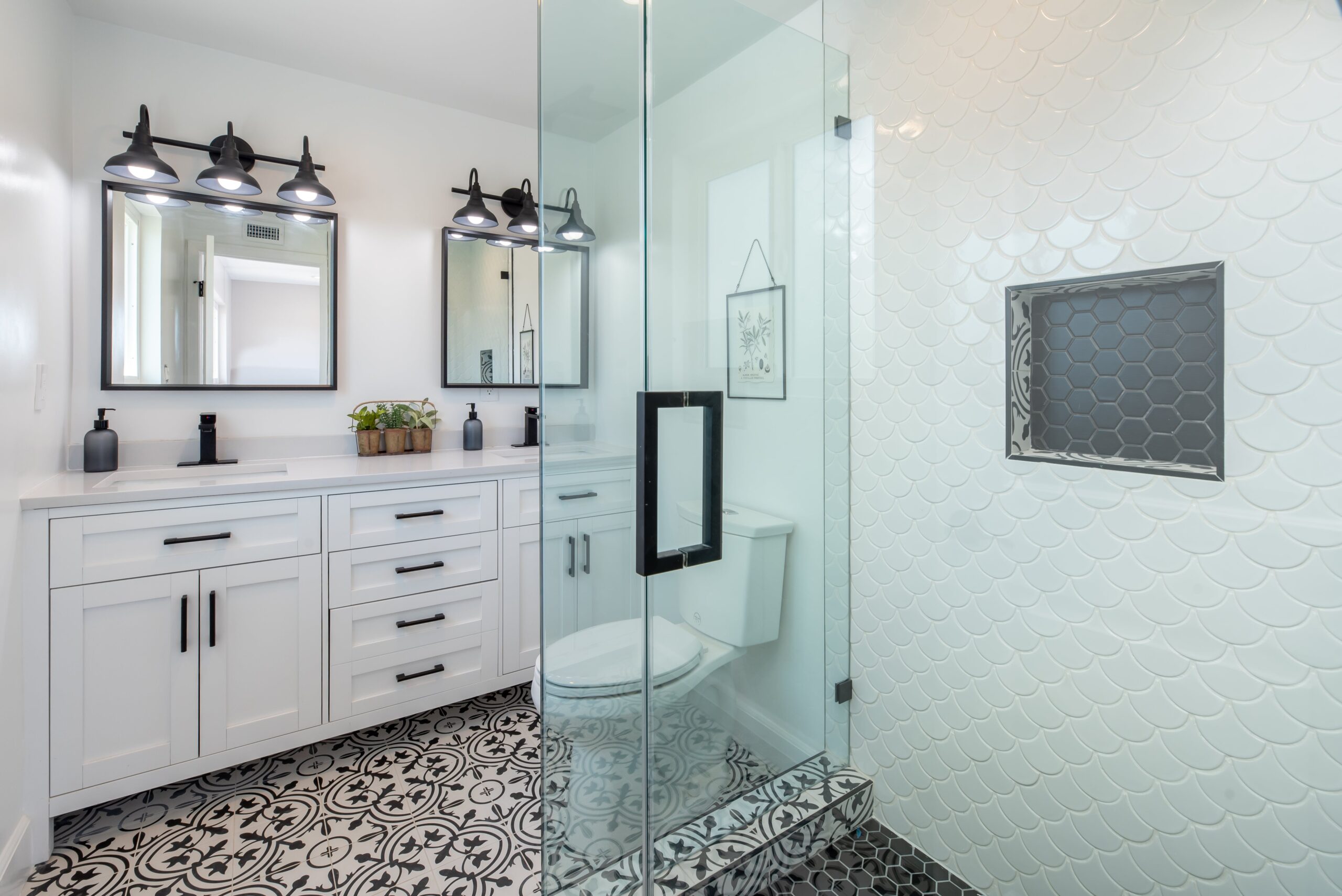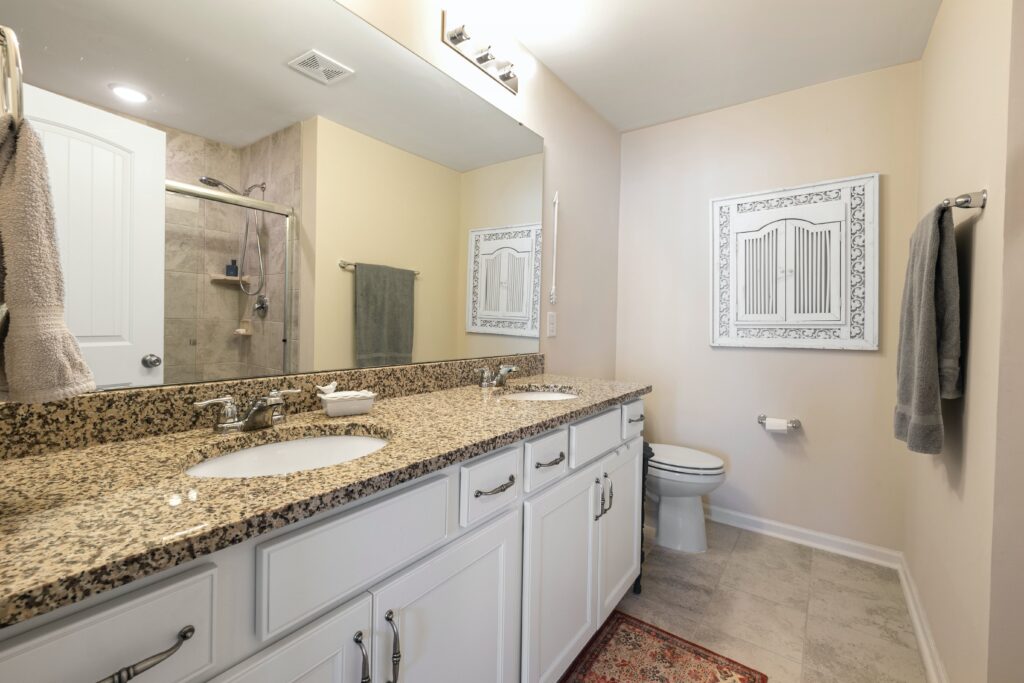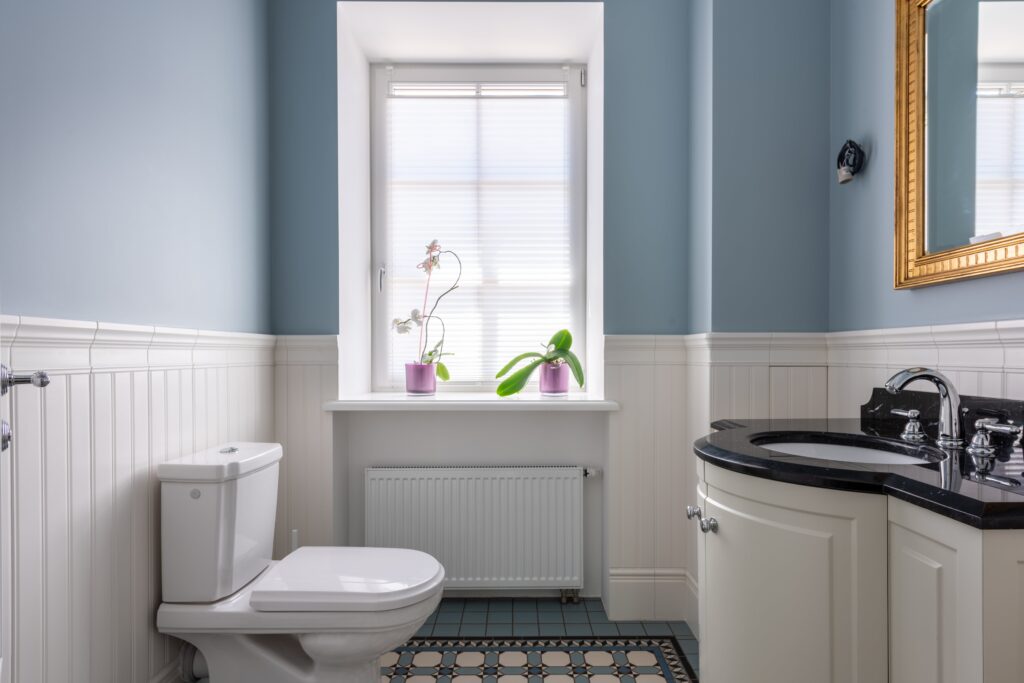
Table of Contents
The bathroom vanity is a pivotal element in any home, significantly impacting the overall ambiance and usefulness of the space. It’s likely that you utilize your bathroom vanity several times a day. You spend many hours of your life in front of this sink-countertop combination whether brushing your teeth, shaving, applying makeup, and cleaning up.
In a well-designed bathroom, this fixture shines as a focal point, expertly merging functionality with beauty. Evolving through time, these adaptable fixtures present a multitude of styles, materials, and setups, catering to various tastes and spatial needs.
What is a Bathroom Vanity?
The bathroom vanity serves as a focal point, combining a sink or basin with a countertop and storage space. From classic designs to contemporary innovations, this fixture has become an integral part of modern bathrooms, serving not only as a functional necessity but also as a style statement. They come in various shapes, sizes, and materials, allowing homeowners to tailor their choices to match their individual tastes and spatial constraints.

Styles and Designs
The diversity in styles and designs of bathroom vanities caters to a wide spectrum of preferences. Traditional vanities often feature intricate detailing, rich woodwork, and ornate hardware, evoking a timeless charm. On the other hand, contemporary designs emphasize sleek lines, minimalist aesthetics, and innovative materials like glass, metal, and concrete, reflecting a modern sensibility.
Transitional vanities offer a harmonious blend of traditional and contemporary elements, appealing to those seeking a balanced approach. Floating vanities, mounted directly to the wall, lend a sense of openness and spaciousness, making them a popular choice for smaller bathrooms or for creating a more minimalist look.
Materials and Finishes
The choice of materials significantly impacts the appearance, durability, and maintenance of bathroom vanities. Wood, such as oak, maple, or walnut, remains a classic option, adding warmth and elegance to the space. Additionally, engineered woods like MDF (Medium-Density Fiberboard) and plywood provide cost-effective alternatives without compromising quality.
For a touch of sophistication, stone countertops like granite, marble, or quartz offer durability and timeless beauty. Their natural variations in color and pattern add character to the vanity while ensuring resistance to moisture and daily wear.
Furthermore, the finishes applied to vanities play a pivotal role in defining their aesthetics. Matte, glossy, or textured finishes can dramatically alter the visual impact, allowing homeowners to personalize the space according to their desired ambiance.
Functionality and Storage Solutions
Apart from their visual appeal, bathroom vanities excel in providing efficient storage solutions. Cabinets, drawers, and open shelves integrated into the design offers convenient space to organize toiletries, towels, and other bathroom essentials. This not only enhances the functionality of the vanity but also helps in keeping the bathroom clutter-free and organized.
Modern vanities often incorporate smart features such as soft-close drawers, built-in organizers, and innovative dividers, optimizing the storage capacity and ease of use. Additionally, customizable configurations enable homeowners to tailor the vanity to their specific needs, ensuring every inch of space is utilized efficiently.
Customization and Personalization
The flexibility and customization options available for bathroom vanities empower homeowners to create a personalized oasis within their bathrooms. From selecting the size and layout to choosing the hardware and finishes, customization allows for the creation of a vanity that complements the overall theme of the bathroom while reflecting individual style preferences.
Moreover, the integration of additional features such as LED lighting, mirrored cabinets, or built-in charging stations further elevates the functionality and aesthetics of the vanity, catering to the diverse needs of modern lifestyles.

Sustainability and Eco-Friendly Options
With growing environmental consciousness, there’s a rising demand for sustainable and eco-friendly bathroom vanities. Manufacturers are increasingly utilizing recycled materials, sustainable wood sources, and eco-conscious production methods to reduce the environmental impact.
Additionally, the use of water-saving faucets and energy-efficient lighting fixtures in conjunction with eco-friendly vanities contributes to creating a more environmentally conscious bathroom space.
How much should a vanity cost in a bathroom?
Homeowners typically face a decision between two options: opting for prefabricated vanities or choosing custom-built ones. Assembled prefabricated bathroom vanities can be found at various stores such as The Home Depot, Lowe’s, Pottery Barn, Costco, Wayfair, Ikea, and others.
Prefabricated vanities are notably less expensive compared to their custom-built counterparts. Expect to pay approximately double the price for custom-built bathroom vanities. For a single bathroom vanity ranging between 2.5 to 5 feet in size, costs may fall between $200 to $1800, while a larger double bathroom vanity (6 feet or more) might reach up to $2600.
The choice of materials for the bathroom vanity top also significantly impacts its cost. Among the popular materials for vanity tops are Granite, Quartz, Cultured Marble, Corian, Porcelain, or ceramic tile.
Is vanity waterproof?
Typically, bathroom vanities are made waterproof using water-resistant material, such as PVC, stone, or granite during fabrication. This waterproofing is essential due to the presence of washbasins installed atop the vanity, making it susceptible to the moisture-laden ambiance of the bathroom. Absorption of humidity by the materials used in fabrication can lead to damage or deterioration, hence the emphasis on employing waterproof materials to maintain the vanity’s durability and longevity.
What is the life of a bathroom vanity?
The lifespan of a bathroom vanity can vary based on several factors, including the quality of materials used, frequency of use, maintenance, and overall wear and tear. On average, a well-maintained bathroom vanity made from durable materials such as high-quality wood, PVC, stone, or granite can last 10 to 30 years.
However, factors like water damage, exposure to humidity, excessive moisture, and improper maintenance can significantly impact its longevity, potentially shortening its lifespan. Regular cleaning, proper sealing, and maintenance routines can help extend the life of a bathroom vanity.
Conclusion
Bathroom vanities embody the perfect amalgamation of form and function, enhancing the visual appeal while offering practical storage solutions. With an extensive array of styles, materials, and customization options available, these fixtures serve as a canvas for homeowners to express their unique tastes and preferences while elevating the overall ambiance of their bathrooms. Whether aiming for a traditional, contemporary, or transitional look, the versatility and adaptability of bathroom vanities make them an indispensable component in modern bathroom design, ensuring both aesthetics and functionality are seamlessly integrated.
FAQs
What is a bathroom vanity?
A bathroom vanity is a cabinet-like structure that typically includes a sink or basin and a countertop. It’s designed to provide storage space and support for the sink in bathrooms.
What sizes do bathroom vanities come in?
Bathroom vanities come in various sizes, ranging from small units around 18 inches wide to larger ones over 72 inches wide, accommodating different bathroom dimensions.
Are bathroom vanities customizable?
Yes, bathroom vanities can be customized to fit specific dimensions, designs, materials, and finishes to suit individual preferences and space requirements.
What materials are commonly used for bathroom vanity countertops?
Common materials for vanity countertops include granite, quartz, marble, concrete, solid surface, laminate, and various types of natural and engineered stone.
How much does a bathroom vanity cost?
The cost of a bathroom vanity varies widely based on size, material, design, brand, and customization. Prices can range from a few hundred dollars for prefabricated units to several thousand for custom-built or high-end vanities.
Can I install a bathroom vanity myself?
Depending on your skills and experience with plumbing and carpentry, some people may be able to install a bathroom vanity themselves. However, it’s often recommended to hire a professional for proper installation, especially for complex setups.
Do all bathroom vanities come with sinks?
Not necessarily. Some bathroom vanities are sold as cabinets only, allowing you to choose and install a separate sink or basin according to your preference.
How do I clean and maintain a bathroom vanity?
Regularly cleaning with mild soap and water is suitable for most vanity surfaces. Avoid using abrasive cleaners or harsh chemicals, especially on delicate materials like marble.
What styles of bathroom vanities are available?
There’s a wide range of styles available, including traditional, modern, rustic, farmhouse, industrial, and more. Different styles offer various finishes, hardware, and design elements.
Are there eco-friendly options for bathroom vanities?
Yes, there are environmentally friendly options available, such as vanities made from sustainable materials like bamboo, reclaimed wood, or those with eco-friendly finishes and low-VOC (volatile organic compounds) products.